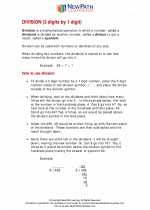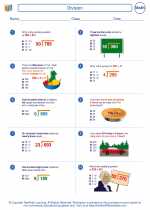Number Patterns Study Guide
What are Number Patterns?
Number patterns are sequences of numbers that follow a certain rule or relationship. These patterns can be found in various mathematical contexts, including arithmetic, geometric, and other types of sequences.
Types of Number Patterns
There are several types of number patterns, including:
- Arithmetic Patterns: These patterns involve adding or subtracting a constant number to each term to get the next term.
- Geometric Patterns: These patterns involve multiplying or dividing by a constant number to get the next term.
- Square Number Patterns: These patterns involve a sequence of numbers that are the result of multiplying a number by itself (e.g., 1, 4, 9, 16, 25...).
- Cubic Number Patterns: These patterns involve a sequence of numbers that are the result of raising a number to the power of 3 (e.g., 1, 8, 27, 64, 125...).
Finding the Rule of a Number Pattern
To find the rule of a number pattern, you can use the following steps:
- Look for the relationship between consecutive terms.
- Determine if the pattern is arithmetic, geometric, or another type of sequence.
- Write the rule as an equation or a set of instructions to generate the pattern.
Example
Consider the following number pattern: 3, 6, 9, 12, 15...
This is an arithmetic pattern with a common difference of 3. The rule can be expressed as: nth term = 3n, where n is the position of the term.
Practice Problems
Try solving the following problems to test your understanding of number patterns:
- Identify the type of pattern and find the rule for the sequence: 2, 4, 8, 16, 32...
- Determine the next three terms in the sequence: 5, 10, 20, 40, ...
◂Math Worksheets and Study Guides Sixth Grade. Division
Study Guide Division
Division  Worksheet/Answer key
Worksheet/Answer key Division
Division  Worksheet/Answer key
Worksheet/Answer key Division
Division  Worksheet/Answer key
Worksheet/Answer key Division
Division 

 Worksheet/Answer key
Worksheet/Answer key
 Worksheet/Answer key
Worksheet/Answer key
 Worksheet/Answer key
Worksheet/Answer key

The resources above cover the following skills:
Connections to the Grade 6 Focal Points (NCTM)
Number and Operations: Students' work in dividing fractions shows them that they can express the result of dividing two whole numbers as a fraction (viewed as parts of a whole). Students then extend their work in grade 5 with division of whole numbers to give mixed number and decimal solutions to division problems with whole numbers. They recognize that ratio tables not only derive from rows in the multiplication table but also connect with equivalent fractions. Students distinguish multiplicative comparisons from additive comparisons.